
The geometer moths are moths belonging to the family Geometridae of the insect order Lepidoptera, the moths and butterflies. Their scientific name derives from the Ancient Greek geo γεω, and metron μέτρον "measure" in reference to the way their larvae, or inchworms, appear to measure the earth as they move along in a looping fashion. A very large family, it has around 23,000 species of moths described, and over 1400 species from six subfamilies indigenous to North America alone. A well-known member is the peppered moth, Biston betularia, which has been subject of numerous studies in population genetics. Several other geometer moths are notorious pests.

The tawny speckled pug is a moth of the family Geometridae.
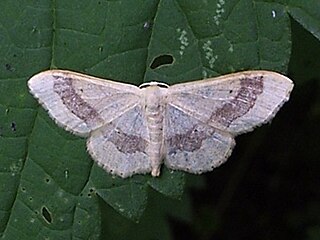
Idaea, sometimes called Hyriogona, is a large genus of geometer moths. It was erected by Georg Friedrich Treitschke in 1825. They are found nearly worldwide, with many native to the Mediterranean, the African savannas, and the deserts of western Asia.

Ennominae is the largest subfamily of the geometer moth family (Geometridae) with some 9,700 described species in 1,100 genera. They are usually a fairly small moths, though some grow to be considerably large. This subfamily has a global distribution. It includes some species that are notorious defoliating pests. The subfamily was first described by Philogène Auguste Joseph Duponchel in 1845.
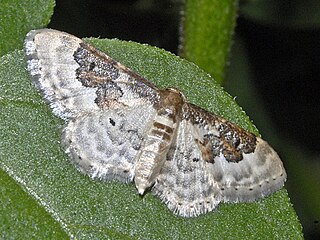
Idaea rusticata, the least carpet, is a moth of the family Geometridae. The species was first described by Michael Denis and Ignaz Schiffermüller in 1775.

Rhodometra sacraria, the vestal, is a moth of the family Geometridae. The species was first described by Carl Linnaeus in his 1767 12th edition of Systema Naturae.
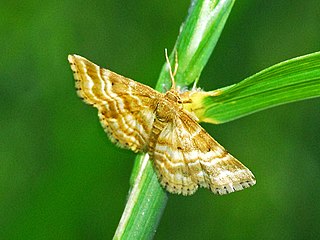
Emmiltis is a monotypic moth genus in the family Geometridae. Its only species is Emmiltis pygmaearia. Both the genus and species were first described by Jacob Hübner, the genus in 1825 and the species in 1809.

Scopula rubiginata, the tawny wave, is a moth of the family Geometridae. The species was first described by Johann Siegfried Hufnagel in 1767.
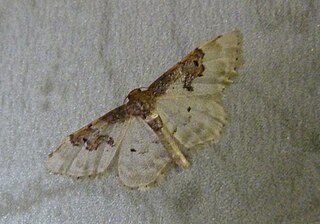
Idaea mustelata is a moth of the family Geometridae. In Europe it is only found on the Iberian Peninsula. It is also found in North Africa, from Morocco up to Western Algeria. It was considered a subspecies of Idaea rusticata up to 2004 when it was re-instated at species level by Axel Hausmann.

Sterrhinae is a large subfamily of geometer moths with some 3,000 described species, with more than half belonging to the taxonomically difficult, very diverse genera, Idaea and Scopula. This subfamily was described by Edward Meyrick in 1892. They are the most diverse in the tropics with the number of species decreasing with increasing latitude and elevation.

Idaea flaveolaria is a moth of the family Geometridae first described by Jacob Hübner in 1809.
Idaea retractaria is a species of geometrid moth in the family Geometridae. It was described by Francis Walker in 1861 and is found in North America.

Idaea basinta, the red-and-white wave, is a species of geometrid moth in the family Geometridae. It was described by William Schaus in 1901 and is found in Central and North America.
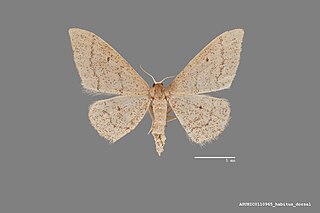
Idaea productata is a species of geometrid moth in the family Geometridae. It was described by Alpheus Spring Packard in 1876 and is found in North America.

Idaea obfusaria, the rippled wave, is a species of geometrid moth in the family Geometridae.
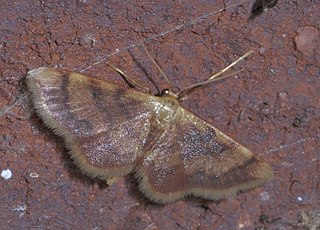
Idaea demissaria, the red-bordered wave moth, is a species of geometrid moth in the family Geometridae. It is found in North America.
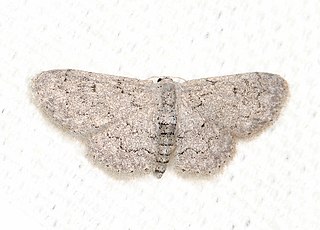
Idaea violacearia is a species of geometrid moth in the family Geometridae. It is found in North America.
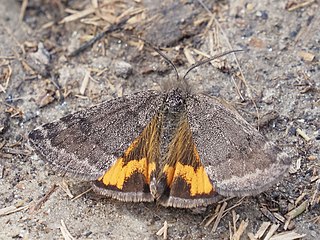
Boudinotiana is a genus of geometrid moths in the family Geometridae. There are at least four described species in Boudinotiana.

Idaea occidentaria is a species of geometrid moth in the family Geometridae. It is found in North America.

Epilobophora sabinata is a moth of the family Geometridae.



















